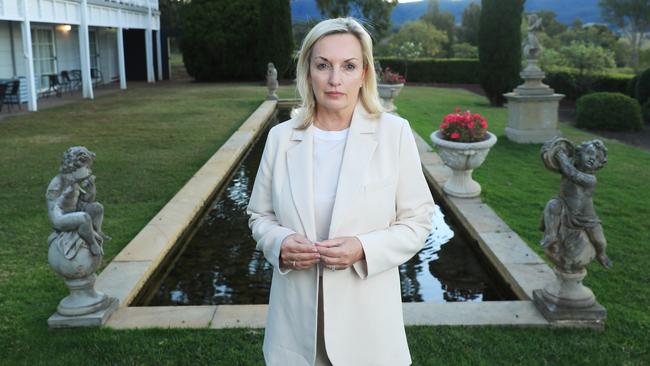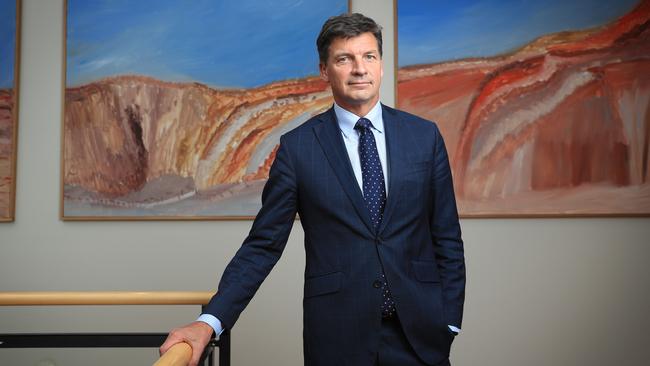
Wednesday’s statement was all that was needed last October but instead the government and the Post board’s mismanagement has lost both credibility.
It said: “Australia Post now acknowledges that it has lost an effective CEO following the events on the morning of 22 October 2020 … and regrets the difficult circumstances surrounding Ms Holgate’s departure from her role as CEO.”
Granted in the credibility stakes what has happened with the Covid vaccine rollout puts Post in the shade, but the saga is worth noting because there must surely be some more shoes to drop.
Chair Lucio Di Bartolomeo will be lucky to serve out another 12 months having proved himself incompetent but politically it was better to keep him in the role until the noise died down. Far better than to wave goodbye and risk him letting loose in the middle of the storm.
Holgate collected six months pay of $700,000 plus $300,000 in quasi compensation and can now get on with her new job at Toll.
She takes with her her old personal assistant and Michael Oates who was running mail products at Post when he left but before that was the sales guru.
New boss Paul Graham starts in a few weeks from his present role as head of supply chain at Woolworths where he has an excellent reputation and indeed all the characteristics which make him the ideal head of Post.
In retrospect Holgate was not that person.
Finance Minister Simon Birmingham came to the job when the damage had been done but stepped in and drove the welcome mediation result unveiled on Wednesday.
Question how long Paul Fletcher emerges unscathed given his portfolio has touched on the Post snafu and the overpayments for the Badgerys Creek airport in Sydney by a factor of 10 times.
The good news is the Holgate saga for Australia Post is now nominally finished but the stench remains and there is more to do, starting with a clean out of the board.
The mistreatment of Holgate is now acknowledged but how much faith does someone in business have in working for the government in the way she was mistreated on a political whim to serve the news feed of the day?
-
Carbon failure
Both Angus Taylor and Chris Bowen face a key decision on just where to set Australia’s safeguard carbon policy in the face of growing evidence that Australia faces a capital strike on new investment.
Neither the government nor the opposition have firm policies on where to set the safeguard baseline for big industrial carbon emitters.
The issue has come to a head because the compliance carbon market hit a record $23.30 a tonne recently. It was the first time it has closed above the $23 starting price since it was set in 2012, when the then PM Julia Gillard laid down the safeguard mechanism.
It works by setting a line. If an emitter crosses that line, it must buy carbon credits to offset the breach. By way of example, a cement plant may set a limit of 100,000 tonnes of carbon a year and if it emits 110,000 tonnes it must buy 10,000 credits.

The market price set was for a future contract deliverable next February, which means someone will pay $23.30 a tonne, which tells you they think the carbon price is rising.
That is worth noting, for among other reasons Energy Minister Taylor runs a million miles when you mention anything like a market price for carbon, because that would be a tacit recognition that he runs a carbon market.
Never mind that China has just established an emissions trading scheme. The Liberal Party runs at the mere mention of the words “market price” when it comes to carbon.
The trouble is, Reserve Bank deputy governor Guy Debelle will tell you foreign investors in their droves say the lack of clear commitments on carbon emissions is a big deterrent to new investment.
For a small country like Australia that is a problem.
A spokesperson for opposition spokesman Chris Bowen said the Labor Party was still working out its policy on the safeguards mechanism, which shows the political sensitivity is felt on both sides.
Ideally the government would have a policy that says our cement plant allowed 100,000 tonnes of emissions today should cut them by, say, 10,000 tonnes by 2025.
If the cement plant wants to buy credits this will drive the price higher and the incentive to lower emissions is also higher.
That is how most Liberal Party members would understand the market mechanism.
Taylor isn’t in that cohort, because mention carbon and he talks about technology.
Technology is good and the sooner he refines the mechanism to allow better measurement of soil carbon the better it will be for farmers and Australian industry.
It makes more sense to set tighter limits to let the market set the price and guide new investments to drive emission reduction.
Taylor would rather have a government (read taxpayer) funded mechanism via the Emissions Reduction Fund, which buys credits in the voluntary market.
-
Fielder goes green
While politicians sit on their hands wondering if the industry is getting on with the job, Goodman Fielder’s bakery operations are now 100 per cent powered by renewable energy.
The company’s Helga’s brand is wrapped in recyclable plastic and is about to take the final step by using cardboard as the closure instead of hard plastic used today.
Goodman Fielder was acquired in 2015 by Wilmar and First Pacific.
-
Woodside’s tardy call
It is now four months since Meg O’Neill was installed as acting chief at Woodside and nine months since her old boss Peter Coleman publicly signalled his intention to leave.
The two worked at Exxon Mobil together and when she joined four years ago it was as head of operations.
Chair Richard Goyder effectively put O’Neill on trial to see how she could handle the wider duties and whether she passed muster as being “commercial”.
This is Wesfarmers speak for understanding the monetary impact of each decision.
The talk is a final decision will be made on the chief executive by month’s end with O’Neill surely the front runner but there are still a couple of other candidates in the mix.
Suffice to say a decision on the boss is long overdue in what has been a poorly handled succession compounded no doubt by Covid.
Wednesday’s cost upgrade for the $US12bn ($16bn) Scarborough project was not unexpected and O’Neill made clear the project was still flashing green lights.
A final investment decision is due this year.




It has taken the federal government 10 months to finally take a step towards clearing a total snafu over the management of Australia Post which culminated in Prime Minister Scott Morrison’s embarrassing over-reaction to her staff gifts.